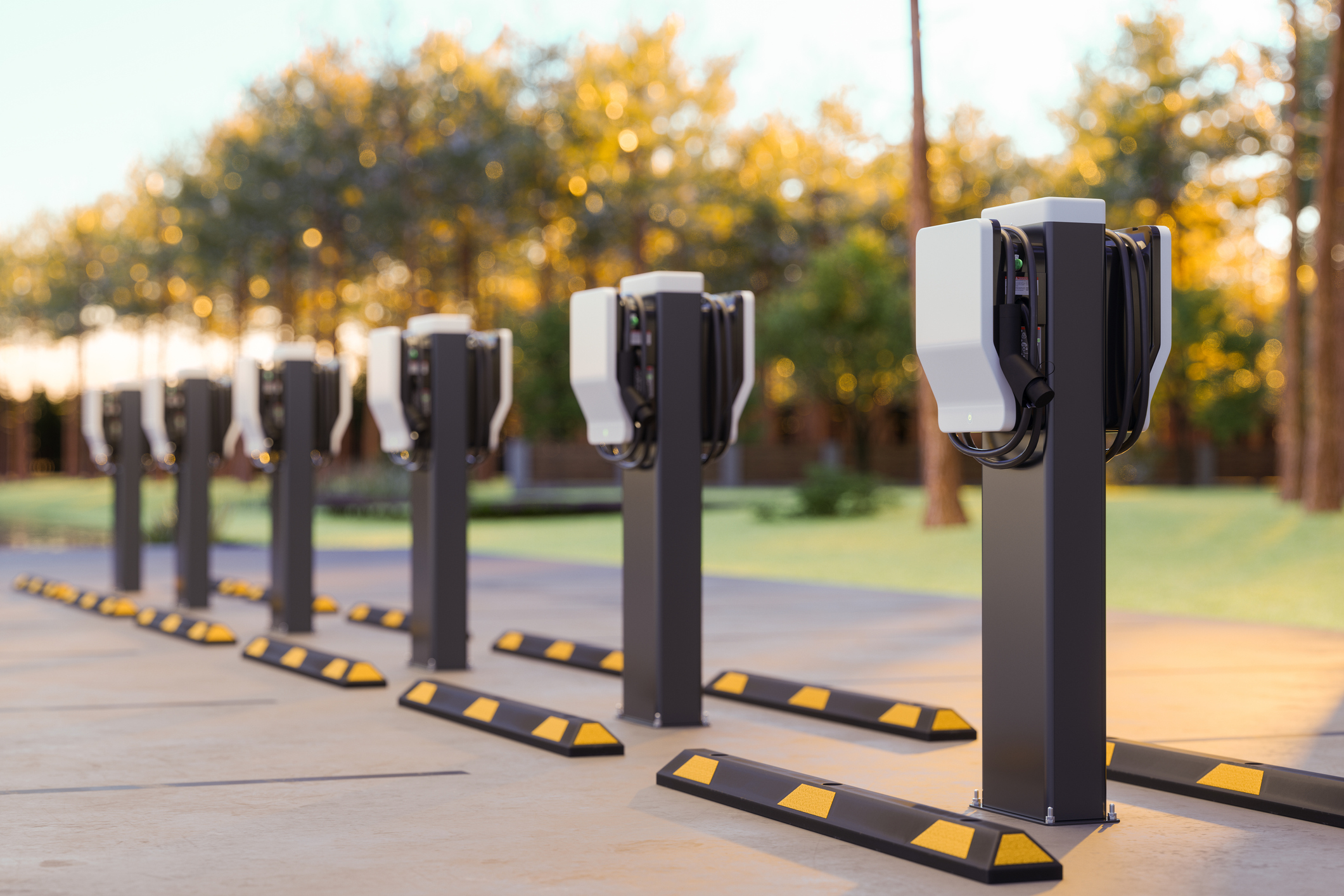The Government Announces £1.6 Billion Boost for UK Charging Infrastructure
Monday 28th March 2022

In publishing the government’s much anticipated electric vehicle infrastructure strategy, Transport Secretary Grant Shapps said that:
No matter where you live, be that a city centre or rural village, the north, south, east or west of the country, we’re powering up the switch to electric and ensuring no one gets left behind in the process.

Grant Shapps
Transport Secretary
This may sound more like a soundbite than a strategy, as does the Department for Transport’s (DfT) assertion that charging an EV should be easier and cheaper than refuelling a petrol or diesel car, but it does sum up the government’s vision. That said, such claims need to be balanced with the fact that ministers openly admit the current pace of roll out is too slow.
The government’s stated goal is to ensure that the UK is a place where:
- Everyone can find and access reliable public chargepoints wherever they live
- Effortless on and off-street charging for private and commercial drivers is the norm
- Fairly priced and inclusively designed public charging is open to all
- Market-led rollout for the majority of chargepoints delivering a thriving charging sector
- Infrastructure is seamlessly integrated into a smart energy system
- Continued innovation to meet drivers’ needs lowering cost and increasing convenience
Funding the ‘big switch’
£1.6 billion to support the roll out of publicly accessible chargers
The Rapid Charging Fund of £950 million to support the roll out of at least 6,000 high powered chargepoints at motorway and major A road service areas was launched back in September 2021 and an additional £500 million has been set aside to help local authorities ‘find innovative ways to increase local chargepoint coverage’. This includes increasing the Local Electric Vehicle Infrastructure (LEVI) fund to £450 million and the On-street Residential Chargepoint Scheme.
A transport working group is also being developed through the Local Net Zero Hubs so that regional EV infrastructure initiatives can be coordinated at a national level. The five Local Net Zero Hubs will promote best practice and support local authorities to develop net zero projects that are better positioned to attract commercial investment.
There is also £50 million within the LEVI fund to assist planning at a local level. Of course, these plans will need to be created in harmony with the government’s ‘greenprint’ which encourages activate modes of transport such as cycling and walking.
Within the fund, there is also a pilot scheme where local authorities will bid for a share of £10 million in funding to help them work with the private sector, trialling delivery mechanisms, business models and technologies.
Is the fund big enough for the task?
A tenfold increase in chargers is needed within the next 8 years
It’s a sizeable fund, but then again, so is the task at hand. The government believes that to support the 2030 ban on new petrol and diesel only cars and vans that a network of at least 300,000 public chargepoints will be needed. Currently, figures produced by ZapMap show that there are just over 30,000 devices, with around 50,000 connectors in 19,000 locations. In other words, there is a long way to go in a short space of time.
We also need to remember that it is not simply a numbers game. Not all users have the same needs. For example, larger commercial vehicle operators have significantly different access and charging requirements to regular car drivers. Therefore, the infrastructure created over the next few years needs to offer the right charging facilities when and where they are needed.
Decarbonisation only possible with private sector investment
The government is relying on the private sector to invest and deliver a world-class infrastructure
Whilst the government must create the legislative and fiscal landscape for decarbonising the UK road network, the role of the private sector cannot be underestimated. There are already public chargepoints at supermarkets, gyms and tourist attractions which are being installed without government support. And the recent announcement by BP that they will be investing £1 billion in expanding their UK charging network shows that there is clearly appetite within the private sector to play their part.
In the long term, the government’s goal is to completely integrate EV charging with the UK’s smart energy system, creating the potential for lower, or even negative, electricity tariffs for those able to charge flexibly. Although, what this means in practice is a little vague at present.
Supporting disabled drivers
New standards to be created to ensure drivers can easily access suitable chargepoints
In partnership with Motability, the government has commissioned the British Standards Institute (BSI) to develop charging standards to improve disabled people’s experience when using public EV chargepoints across the UK. The aim of these standards will be to ensure that disabled drivers are able to easily find and use chargepoints that are suitable for their needs.
New research into better use of data
Optimising the planning and delivery of chargepoints by local authorities
The government has launched a new Geospatial Commission project that will explore how location data can be better utilised to support planning and delivery of electric vehicle chargepoints by local authorities. Dr Steve Unger, Commissioner at the Geospatial Commission, commented that:
Location data will play a key role in planning the UK’s transition to electric vehicles and help make net zero a reality.
Through this project, the Geospatial Commission will understand the challenges faced by local authorities who wish to exploit location data.
By working together, we will be able to unlock the potential for data-driven innovation in transport.

Steve Unger
Commissioner at the Geospatial Commission
In a similar vein, new research will also seek to capture fleet attitudes and preferences towards charging and the government has committed to working with industry to improve information on depot locations and other large fleet sites.
Pricing transparency and ease of use
Clear and transparent pricing in real-time with contract-free contactless payments
Currently, the UK network of public chargepoints is best described as somewhat fragmented. The number of providers, and the fact that they all have their own payment systems, apps, and rules around membership, can make it confusing for the new EV driver.
The government has therefore pledged that there will be a legal requirement introduced this summer to ensure that operators share real-time data about their chargepoints, including current pricing, in a way that helps drivers easily find the most convenient and cost-effective location to recharge. And, to ensure easy price comparison, providers will need to quote rates based on a pence per kWh.
In a response to a report by the Competition & Markets Authority published in July 2021, which found that just 9% of all public chargepoints, and 41% of 50kW+ chargers, accepted contactless bank account based payments, the government has said they will mandate that operators must accept Pay-as-you-go (roaming) payments using contactless cards, apps, QR codes or online processing for all chargers over 7.1kW. Legislation in relation to this is expected to come into force this summer.
Finally, to ensure the reliability of the UK charging network, the government has pledged to mandate a 99% reliability rate at rapid chargepoints and has even said that, if the market cannot achieve this target, failing providers will be named and shamed and further regulation will, if necessary, take place in 2024.
Protecting the National Grid
More reports and planning documents are on the way
The rapid escalation of EV adoption will undoubtedly put pressure on the National Grid. And so, to ensure there is a balanced approach that maximises flexibility for EVs whilst protecting the electricity grid and consumers, the government is publishing a joint Government-Ofgem Electric Vehicle Smart Charging Action Plan this summer.
Before then, we will see the publication of the electricity networks strategic framework: Electricity Networks: Enabling the Transition to Net Zero. This will include more information on the governments approach to enabling cost effective and timely connections. In line with this, Ofgem have already proposed changes to reduce the cost of new grid connections where upgrades to the existing network are required.
The road ahead
In addition to the publication of the EV infrastructure document, seven additional reports were also released, with more on their way over the next few months. The scope of all these reports highlights the size of the task ahead and it’s clear that there is still a long way to go. That said, strong progress is being made and, whilst the pace needs to accelerate, the government, local authorities, and the private sector, are fully committed to the goal.
If you would like to learn more about how we can help your business get ready for net-zero mobility, just get in touch.

